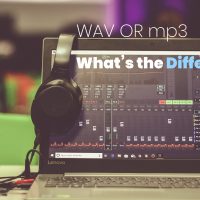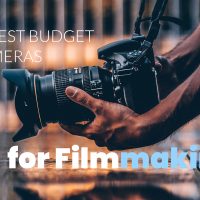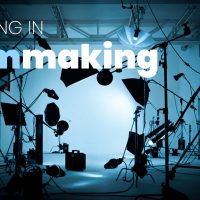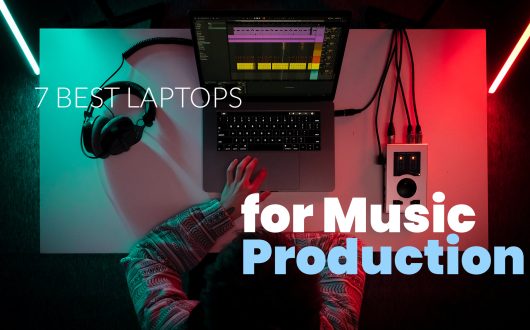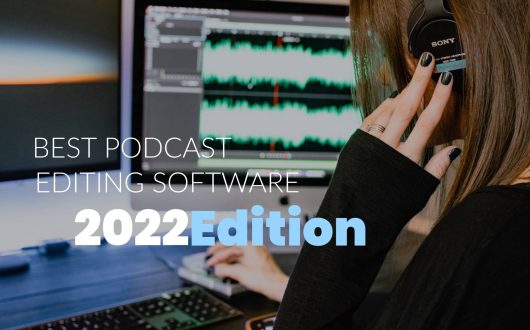
The Audio Buzz Blog
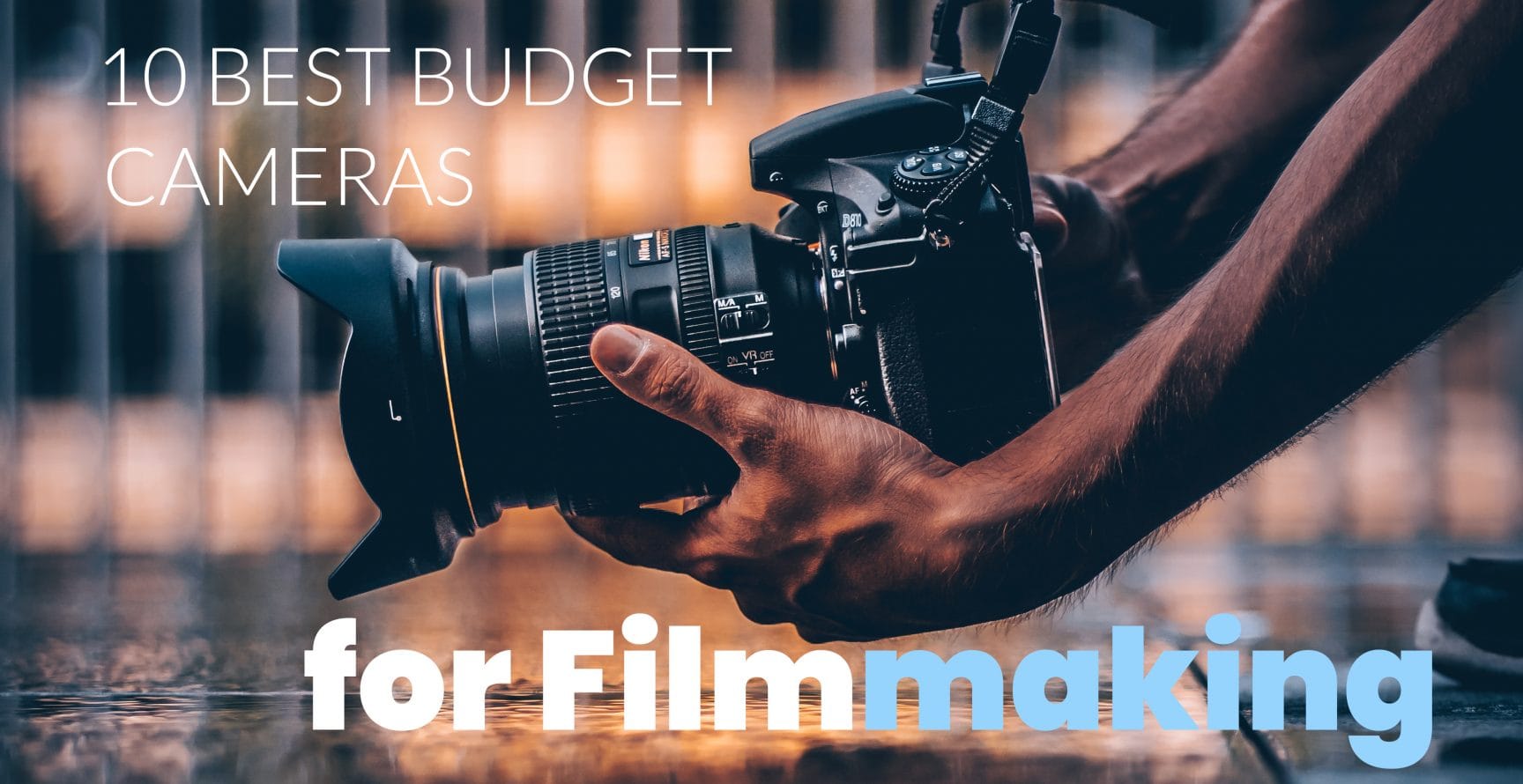
10 Best Budget Cameras for Filmmaking in 2020
In filmmaking, anything is possible, whether you are trying to mirror real life or create an entirely new reality. Fact or fiction, the only rule is that the audience must believe it enough to engage emotionally. The thing that makes filmmaking so powerful is the connection between audio and video. What the audience sees and what they hear determines how they feel. This measures the success of your film (artistically speaking at least). In theory, with so many ways to share creative work now, the only boundary is your imagination. In reality, the cost of equipment often overrules imagination. Luckily, with the rise of young filmmakers and vloggers, more high-quality cameras are now widely affordable. We looked at the different types of cameras available on a budget and what they do best. Our 10 best budget cameras will give you some clear options to suit your project and your budget.
What Type of Camera is Best for Filmmaking?
There is no straightforward answer to this question; it depends on your budget and the type of content you want to film.
The most commonly used cameras in budget filmmaking are DSLR, mirrorless, and camcorders.
There are arguments for using each so you must understand what you need from a camera to make the best choice.
DSLR Cameras and Mirrorless Cameras
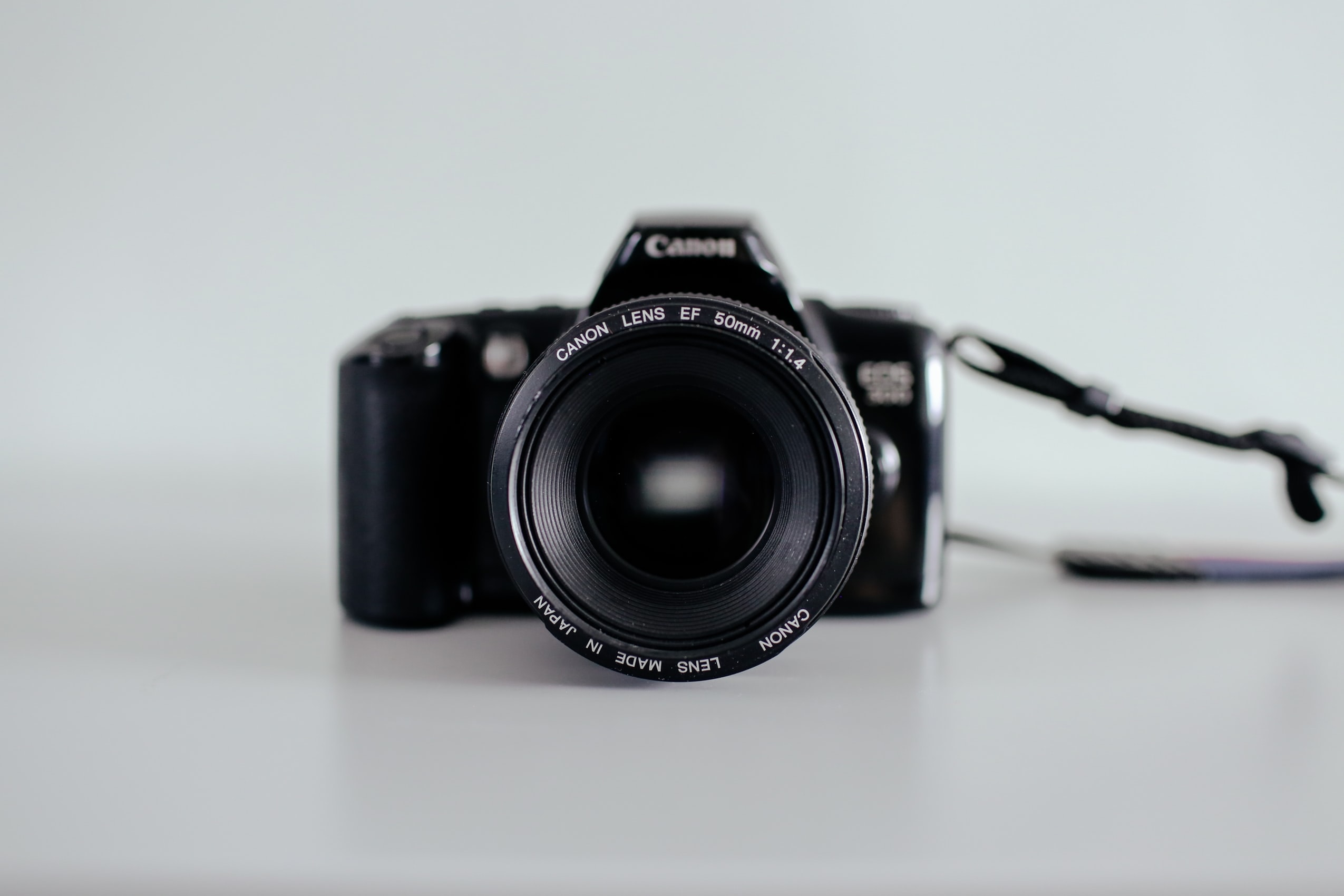
Photo by Thomas AE on Unsplash
DSLR and mirrorless cameras are by far the most popular with filmmakers on a tight budget.
When you can’t afford multiple specialist cameras, versatility is essential, and that’s what these cameras offer.
Both DSLR and mirrorless cameras are capable of taking fantastic stills and video without breaking the bank.
DSLR cameras are based mostly on the design of the traditional 35mm film camera from the late 19th century.
A mirror (reflex mirror) reflects the light that enters the lens up to a prism then into the optical viewfinder (Speaking of older technology, we think it’s super advantageous to experience film photography while or before using digital cameras in general)
This simple but revolutionary technology is what allows you to preview your shot in the viewfinder.
When you are ready to take your shot, press the shutter button and the mirror flips up.
With the mirror out of the way, the light hits the image sensor and captures your shot. In video mode, DSLRs reflex mirror is always up.
A mirrorless camera, as the name suggests, doesn’t use a reflex mirror. Instead, light enters the lens and goes directly to the image sensor.
A preview of your shot is shown on an LCD screen and sometimes a digital viewfinder.
The downside of not having an optical viewfinder is that the constant use of an LCD screen and/or digital viewfinder drains battery life faster.
However, you should be aware that a DSLR camera cannot use its optical viewfinder in video mode because the reflex mirror must remain up for continuous shooting.
So DSLR cameras have the advantage of longer battery life in photo-mode, but both have to rely on the LCD screen for video previews.
Both of these cameras are considered ILCs (interchangeable lens cameras). As the name suggests, both cameras have the capacity to swap one lens for another, which means you can use specialist lenses to get the perfect shot!
The most noticeable difference between DSLR and mirrorless cameras is the size.
DSLR cameras are larger because they have to house the reflex mirror, and mirrorless cameras have the luxury of being more compact.
There are advantages and disadvantages for both. Let’s start with the obvious ones.
Mirrorless cameras are more comfortable to travel with; they are lighter and allow more space in your bag for accessories.
On the other hand, there are fewer accessories available for mirrorless cameras (lenses, etc.)
The lack of interchangeable lenses for mirrorless cameras is one of the reasons why many professionals still prefer DSLRs.
Another reason some people prefer DSLRs is that they have a more substantial grip area, which can be useful when shooting without a stabilizer or tripod.
A Brief Explanation of Autofocus
DSLR cameras used to have a clear advantage when it came to autofocus.
The reason they had the upper hand is that they use phase detection rather than contrast detection.
Mirrorless cameras, for some time, only offered contrast detection.
In simple terms, phase detection works by a prism splitting an image into two.
If the divided images line up, then your image is in focus.
This method allows the phase-detection system to tell the camera lens which way to focus accurately, and by how much.
Contrast detection works by analyzing pixels on the image sensor to find the point where contrast is highest.
The lens has to focus back and forth to find the highest contrast, searching for the best position.
That’s why you sometimes see that blurriness come and go around the center of your shot.
Contrast detection can be especially slow in low-light environments.
Phase detection is a faster and more accurate method of autofocus.
Mirrorless cameras now offer both types of autofocus and in some cases, do it better than a DSLR.
We have explained the basics, but you can learn more about phase detection vs. contrast detection.
Now, here’s the bad news. DSLRs can’t use phase detection when the mirror is up in video mode.
The consensus is that modern mirrorless cameras shoot better video than DSLRs because they can use phase detection in video mode.
Although mirrorless cameras are not inherently better than DSLRs or vice versa, each camera has to be taken on individual merit.
Camcorders
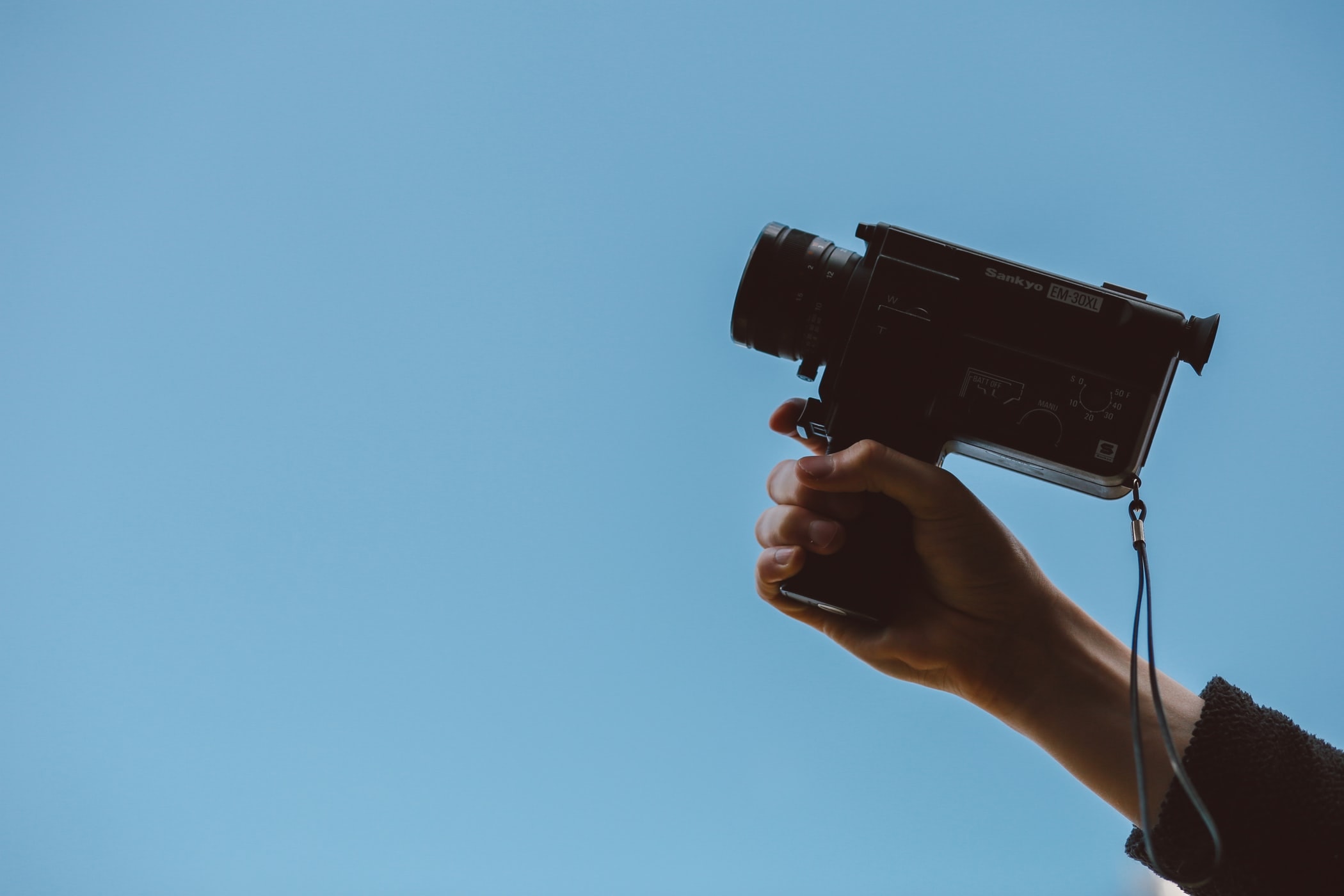
Photo by Thomas William on Unsplash
A camcorder records video in different digital formats.
The lens focuses incoming light onto an image sensor that converts the light into voltages.
The voltages are then converted into a digital signal that can be stored on flash memory cards or other storage devices.
As a mirrorless camera, digital camcorders use an LCD screen and/or a digital viewfinder to preview images/videos.
It’s occasionally thought that camcorders cannot take stills, even though they can – but often in far inferior quality.
What they lack in versatility, they make up for in superior video/audio quality.
The reason they offer better audio quality is that they often have XLR inputs that let you connect external pro-grade microphones.
Another reason for choosing a camcorder is that they tend to be easier to use than other camera types if you only want to shoot video.
Action Cameras
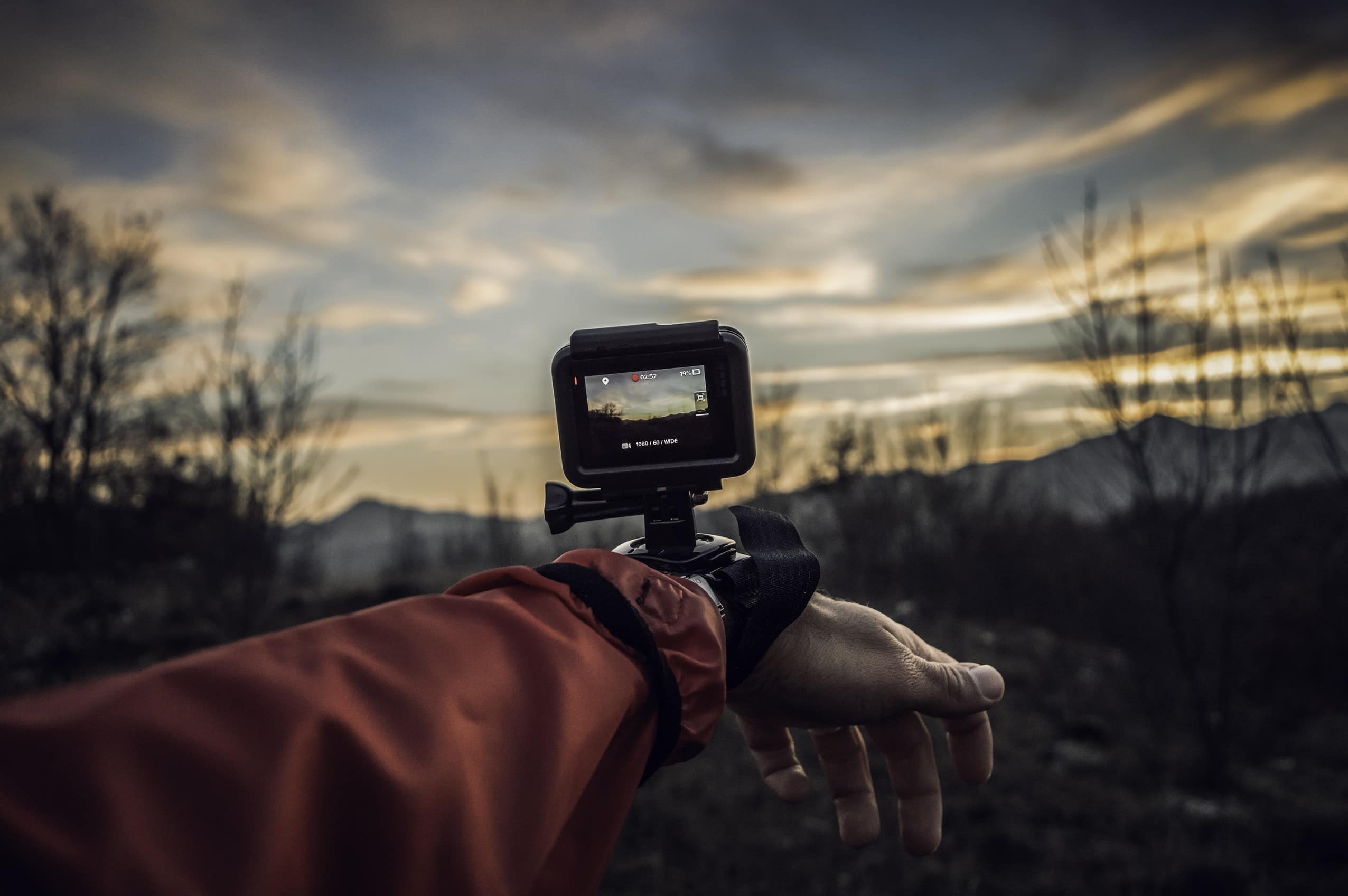
Photo by Fabrizio Verrecchia on Unsplash
When we talk about action cameras, we mean things like the GoPro Hero range, Zoom cameras, and Sony’s FDR range.
Action cameras are never going to compete with DSLR, mirrorless cameras, or camcorders. They are purpose-built to film the things that other cameras can’t.
They work just like any other camera, but you usually trade some image quality for build quality.
These cameras have to be robust and ready for anything.
They come with a wide range of accessories, like attachments for helmets, clothing, etc.
That is the whole point; regular cameras capture the action as a spectator, action cameras shoot from inside the action.
What to Look Out for When Choosing a Camera
Workflow
When you are buying any equipment as part of a creative process, you have to think about workflow.
It has to be easy to use, fast, and comfortable.
Figure out what are the essential functions for you, then look at how easy it is to reach them.
You don’t want to be menu-diving continuously for a function you use a lot.
This slow workflow will waste time and kill the creative flow.
Lens
In most budget filmmaking, the wide-angle setting is going to be used more than anything else.
So, the first thing you have to find out is how far the lens can zoom out.
Obviously, the more you can zoom out, the closer you can physically get to the action.
Some cameras have a vast selection of compatible lenses, and some don’t, so make sure you look into the available options.
You don’t want to buy a camera with a lens that’s perfect right now, but in six months when you need a different style, there would be nothing available.
Check out some of the most popular interchangeable lenses.
Image Stabilization
Image stabilization is primarily needed when you are shooting handheld without a tripod.
If you are filming events, walking around with your camera, this is one of the most crucial features.
Not all cameras have built-in image stabilization, so think about how much you are going to need it.
Video Quality
Does it capture HD video? (720p) is it full HD? (1080p) Is it Ultra HD? (4K)
Which one is best for you? – The higher the quality, the bigger the file.
It could be said that if you are only creating online content, your need for 4K video is much less.
This is true in some respects, but again it depends on your specific needs.
YouTube, and other online video platforms, support 4K video, but these larger files can take far longer to upload and process.
If you are a frequent uploader, this extra waiting time could be a serious issue, and between filming, editing, and uploading, time is precious.
It could also be argued that most people will be watching online content on a smartphone, tablet, or laptop, and won’t see the full benefit of 4K video.
Having said that, smart devices and laptops are advancing rapidly and ultra HD screens on portable devices are getting better all the time so that argument will fade soon.
Our advice is to focus on what you do and how often you do it.
If you shoot any kind of cinematic/dramatic content then 4K video will be a massive advantage for you, and well worth the extra upload time.
If you shoot typical vlogger type content which consists largely of you speaking to the camera or reviewing a product, 1080p should be more than good enough, and save you a lot of time.
That doesn’t mean avoid a 4K camera if you only film online content, it means don’t let the lack of 4K video put you off an otherwise suitable camera.
Sound
Most cameras, whether DSLR, mirrorless, or camcorder, usually won’t have great sound.
The built-in microphones tend to come with a lot of unwanted noise. Ideally, you want a camera with an input for an external microphone.
If audio is critical to you, then you might want to choose a camera with XLR inputs.
It’s also a good idea to monitor your audio as you go so that you can make adjustments on the fly.
To do this, you’ll need a camera with a headphones input.
Here are our 10 Best Budget Cameras For Filmmaking
1. Panasonic G80
The Panasonic G80 is widely regarded as one of the best cameras you can buy under $1,000.
The G80 is the seventh evolution of this particular range, and it has gone from strength to strength.
The G80 offers the same 16-megapixel photos and 4K video that made its predecessor, the G7, so popular.
Your shot is previewed on a very precise and responsive, 3″ touchscreen.
As a secondary option, there is also a 2.4 million dot electronic viewfinder.
The most notable upgrade from the G7 is the 12-60mm lens, a marked improvement on the previous 14-42mm lens.
The new lens is not the only premium upgrade that you will find on the Panasonic G80.
The camera lens and body are both weather-sealed – a feature that is usually reserved for more expensive cameras.
Another key feature of the G80 is the sensor-shift optical stabilization that comes from the more expensive GX80 model.
When a stabilized lens is attached, the G80 will use sensor-shift and in-lens systems together to manage unstable conditions better.
This feature also helps with slow shutter speeds.
Pros
- Lots of features and simple controls
- Fast autofocus
- Fantastic 4K video
- Upgraded kit lens
- Weather-sealed
Cons
- Photo image quality should be better
- Size
Verdict
The Panasonic G80 is a fantastic camera for any aspiring filmmaker.
It ticks all of our boxes, and it has a few features that you wouldn’t expect to see without spending more money.
Panasonic has kept everything good about the G7 model and added just the right premium features to make the G80 our top pick.
The negatives are that the photo quality should be better, and it’s closer to a typical DSLR size, but they are minor complaints.
Video is our primary concern, so with that being so good, we can forgive it for not taking the best stills.
As for the size, it’s only an issue if you prioritize size and quality equally, but we don’t.
The fact that the entire camera is weather-sealed, making it more robust for demanding users, is the icing on the cake.
2. Fujifilm X-T30
The X-T30 is the little brother of the Fujifilm X-T3, and it shares many of the same great qualities.
The difference in image/video quality between the two cameras is marginal, but the X-T30 comes in a much smaller body.
The X-T30 comes with a 26.1-megapixel X Trans CMOS sensor and a high-speed autofocus system.
The AF system has four times the phase detection pixels as the previous X-T20 model.
As we mentioned, the video quality of this camera is very close to the more expensive X-T3.
The downside is that you are limited to 10 minutes of 4K (at 30fps) shooting at a time.
The upside is that even in 1080p mode, the video quality is incredibly detailed with reliable autofocus.
The biggest negative with this camera is in the layout.
The Q-menu (quick menu of key settings) button has been moved to the X-T30’s thumb grip, making it easier to press accidentally.
A couple of other controls, like the autofocus joystick, could have been better positioned too.
Pros
- Outstanding photo/video quality
- Fast (reliable) autofocus
- Great retro looks
- Wide range of lenses available
Cons
- No built-in image stabilization
- Only 10 minutes of 4K video at a time
- Handling issues (accidentally pressing buttons)
Verdict
We are going to kick this off with something that is of the least importance, it looks incredible!
We love the retro vibe of this camera; it makes you want to find more reasons to use it.
There are absolutely no issues with the image/video quality – it’s outstanding.
The lack of any built-in image stabilization is a negative but not a deal-breaker.
We can say the same about the somewhat awkward controls, it’s irritating, but you quickly get used to it, and it happens less.
As far as the 10 minute limit on 4K video goes, it sounds worse than it is.
For vloggers/content creators, the 1080p mode is perfect, and if you want 4K for a movie project, it’s unlikely you’d be shooting more than 10 minutes continuously from one angle anyway.
3. Sony Alpha A6500
The Alpha A6500 is the flagship APS-C mirrorless camera from Sony.
The A6500 arrived on the scene just six months after the release of the A6300, and it came with some impressive upgrades.
One of the most significant upgrades was the addition of built-in image stabilization.
It’s the first Sony APS-C mirrorless camera to feature 5-axis built-in image stabilization.
The reason this was so significant is that it takes the APS-C closer to Sony’s premium, Alpha 7 full-frame range.
The Alpha A6500 comes with an APS-C CMOS 24.2-megapixel sensor.
It takes fantastic images, but the main reason we love it is its super-fast 4D autofocus.
The 4D focus system has 425 phase-detect AF points, and it tracks moving objects exceptionally well.
This feature makes it perfect for shooting video. Sony has upgraded the buffer (in comparison to the A6300), so it’s now able to capture 307 full-size JPEGs or 107 raw files.
Images are captured at a speed of 11fps burst rate, and a massive improvement of the A6300’s 44JPEG/22 raw limit.
The most visible improvement since the previous model is the addition of a touchscreen.
It also maintains the same XGA OLED Tru-Finder (digital viewfinder) with a 2.36 million dots resolution.
Pros
- Super-fast autofocus
- Increased buffer capacity
- Built-in image stabilization
Cons
- No headphone port
- Dull LCD screen
Verdict
The Alpha A6500 is one of the most feature-packed mirrorless cameras in its price range.
It’s not without its faults; the LCD screen isn’t nearly as vibrant as you’d expect.
When you consider the previous model didn’t have a touchscreen, it’s still an improvement.
There are cheaper options, but the incredible autofocus makes this camera a winner for anyone who wants to get serious about video.
4. Canon Pro XA11
The Canon Pro XA11 is a compact professional Full HD camcorder.
The XA11 houses a sensor with Wide Dynamic Range Gamma, and much improved low light performance.
It records video in 1080p full HD to SDHC/SDXC memory cards ( two card slots).
You can record around three hours to a single 32GB flashcard.
The improved low light performance is still evident even at a full 20x zoom.
Canon’s Dynamic SuperRange optical image stabilization holds stable even when shooting freehand in poor conditions.
Canon has worked hard to make this camera perform well in low light, and that is shown again in the improved Instant AF Focusing System.
The Pro XA11 features a 1/2.84″ HD CMOS Pro Imager, which provides a wide dynamic range.
There are two built-in XLR inputs, meaning you can use professional external microphones to record audio.
The 3″ touchscreen is easy to get around, that’s typical of Canon.
In addition to the LCD screen, there is an OLED color digital viewfinder to preview your shot.
Pros
- Super-fast autofocus
- Great in low light
- XLR inputs with phantom power
- Infrared night vision mode
Cons
- No 4K video
Verdict
There are a few things to consider with the Pro XA11.
There is no 4K video, but the performance in 1080p mode, with the Instant AF Focusing System, is incredible.
The next thing to consider is that it offers little in the way of versatility that you get with a DSLR or mirrorless camera.
If you get past those issues, and you are sure all you need is a high-quality video, you should take a look at this one.
The XLR inputs with phantom power are an excellent touch.
It shoots well even in low light, and the night vision mode gives you a new way to be creative.
5. Panasonic HC-VX980EB-K
This camcorder is second in line to Panasonic’s flagship HC-VXF990EB-K model.
It lacks a few capabilities of the top model, but it does share much of the same core specifications.
It has the same 1/2.3″ CMOS 18.91-megapixel sensor and 4K video modes.
Unlike many camcorders, this one takes pretty good stills at up to 25.9-megapixels.
The top video mode is Ultra HD, which is 3,840 x 2,160 at 25fpm.
There are multiple video modes, but for most users, 4K and Ultra HD will be your go-to settings.
Some premium functions of the flagship model are missing in this one, like dolly zoom, but the super-smooth slow-motion remains.
One disappointing aspect of this camcorder is the lack of XLR inputs. Instead, there is a mini-jack input for an external microphone.
The Panasonic app offers some very cool functions.
Most impressive is the ability to run up to three smartphones as additional camera angles.
You can even choose two of them to windowed into the main camera image.
Pros
- Great 4K video
- Multi-angle shooting via the Panasonic app
- Simple controls
Cons
- No XLR inputs
Verdict
Camcorders are usually great for video and provide better audio than DSLR/mirrorless cameras through XLR inputs to connect a professional microphone.
This camcorder doesn’t have that luxury, so the audio quality does suffer as a result.
However, it takes far better stills that most camcorders anywhere near this price range, so you lose in one area and gain in another.
The 4K video quality is stunning, and that’s the main thing here.
The ability to use smartphones as other camera angles through the Panasonic app is something we really love, and it’s excellent for covering events.
If you want better audio and more functions, go for the Canon Pro XA11.
If you only want the best quality video, go for the Panasonic HC-VX980EB-K.
6. Nikon D7500
The Nikon D7 range has been loved by enthusiasts for some time now.
The D7500 is the king of that range, which makes it well worth checking out.
Nikon has gone for the same APS-C CMOS 20.9-megapixel sensor that can be found in the D500.
This sensor is coupled with Nikon’s EXPEED 5 image processor.
Omitting a low-pass filter was Nikon’s way to pull out as much detail as possible from the sensor.
Unlike older models that had a stay-flat display, the D7500 has a 3.2″ tilt-angle touchscreen.
It also has a pentaprism optical viewfinder that offers 100% coverage.
The D7500 offers sublime 4K UHD video at 30,25, and 24p.
You can shoot in this mode for up to 29 minutes and 59 seconds, which should be more than enough for anyone.
Image stabilization comes in the form of Nikon’s electronic Vibration Reduction, and it improves handheld filming dramatically.
Recording and monitoring your audio is helped by a headphone jack and microphone input.
One downgrade from previous models is that the D7500 only has one SD card slot rather than two.
Nikon’s SnapBridge Technology enables the camera to stay linked to a smart device via Bluetooth.
While most cameras will do something similar, the D7500 seems to transfer images from the camera to device faster than most.
Pros
- Excellent sensor
- Advanced AF system
- Tilt-angle screen
- 8fps burst shooting
Cons
- Low-res LCD resolution
- Only one SD card slot
Verdict
This is another hit, in a long line of fantastic DSLR’s from Nikon.
The sensor performs beautifully in tandem with the EXPEED 5 image processing engine.
It shoots high-quality stills and very high-quality video.
The LCD display isn’t as good as some other DSLR’s, but it’s not bad enough to put us off.
This is a solid choice for newcomers or intermediate filmmakers alike.
7. Canon Rebel T7i
The Canon Rebel T7i is a hugely popular entry-level DSLR camera.
It comes from the successful Rebel/EOS range that dates back to 2003.
This Rebel comes with a 24.2-megapixel APS CMOS sensor.
Although this is the same resolution as the previous T6i model, the sensor has been upgraded.
The new sensor is partnered with an upgraded DIGIC 7 image processor.
The upgrade sees the T7i process 14 times more information than the older DIGIC 6 chip.
The new chip also boosts the performance of the 45-point autofocus system, which is outstanding.
There is no 4K video with this camera, only full HD 1080p video.
While the is a bit underwhelming, it does have a 5-axis image stabilization system that makes it great for shooting hand-held footage.
Images are previewed on a 3″, vari-angle touchscreen display.
It must be said that Canon has developed one of the most intuitive touch interfaces on any DSLR camera.
The Canon Camera Connect app brings some new gimmicky yet useful features.
Things like operating the camera and browsing images remotely from your smartphone.
Pros
- User-friendly
- Intuitive touchscreen
- Live view autofocus
Cons
- No 4K video
- Only 95% viewfinder coverage
Verdict
The Canon Rebel T7i isn’t likely to be number one on any top 10 lists.
However, it’s a fantastic entry-level option for anyone. Sure, it lacks 4K video and doesn’t excel in every area, but it’s never going to be ideal for high-end video production.
The 45-point autofocus system with live view AF is outstanding.
This camera is perfect for anyone who produces a lot of online content.
8. Canon G7X Mark III
The Powershot G Series is Canon’s flagship range of compact cameras, and the G7X Mark III is the latest addition.
The G7X Mark II has long been a favorite of some of today’s most popular YouTube stars. The Mark III version promises to build on that success.
The Mark III comes with a 20.1-megapixel 1-inch type CMOS sensor and takes an excellent image.
It has a 4.2x zoom, which is a 24-100mm equivalent focal range.
Uncropped 4K video is now available along with multiple other full HD video modes.
Canon has addressed an audio issue that users highlighted from the Mark II, and added a 3.5mm external microphone input.
There is no viewfinder on this camera, but the tilting touchscreen display is spot-on for vloggers.
The screen can tilt all the way forward so you can comfortably record yourself.
You can even live-stream to YouTube without the need for a third-party app.
Pros
- Amazing video features for a compact camera
- Compact
- Manual controls and raw format shooting if wanted
Cons
- 4K not available in manual/semi-automatic modes
- No hot shoe for external accessories
Verdict
The most significant issue people might find with the G7X Mark III is that 4K isn’t available in manual modes.
In our opinion, this isn’t the camera to buy if you want to take full control.
This camera is tailor-made for content creators who want high-quality with no fuss.
It’s easy to use, compact, and dependable even for the most prolific creators.
9. Sony FDR-X3000
Sony has miniaturized its BOSS technology (Balanced Optical SteadyShot) into the small FDR-X3000 action camera.
The FDR-X3000 comes with a Zeiss Tessar multicoated lens, and a 1/2.5 inch 16:9 Exmos R CMOS sensor.
What this means in use is that it can shoot 4K at 30fps, and 1080p at up to 120fps.
There is also a 4K timelapse mode, which is fantastic for creating montage sequences.
Sony includes a Live-View remote with the FDR-X3000, so you can capture the action by yourself easily.
With all of these impressive features, the Sony FDR-X3000 becomes one of the most expensive action cameras on the market.
Pros
- Top-notch image and audio quality
- BOSS technology
- Long battery life
- Well designed layout
Cons
- Inferior display on the Live-View Remote Control
- Slow start-up when using the remote control
Verdict
The price will undoubtedly put off a lot of potential buyers, but don’t be too quick to pass it up.
It does everything that an action camera is supposed to do, but it does it with extra finesse.
If you create a lot of action content, this could be a way to stand out from the crowd with beautifully clean footage.
10. GoPro Hero 8
The GoPro range of action cameras is the most established in their field. We have picked out the GoPro Hero 8.
The Hero 8 shoots the same 4K/60p video as the Hero 7, but there are some definite improvements.
GoPro’s HyperSmooth stabilization system is now on version 2.0.
In previous models, the HyperSmooth stabilization wouldn’t work in specific modes, like slo-mo, etc.
The Hero 8 has a more powerful battery that eliminates that problem.
The max video bitrate has also been upped from 70Mbps to 100Mbps.
Many of the functions are now on version 2.0, like TimeWarp, and Time Lapse.
The upgrade that should excite users most is the live streaming improvement, from 720p to 1080p.
It also features a wind-optimized front microphone for improved audio quality.
Pros
- Better image stabilization
- Improved audio audio
- Longer battery life
- Full HD live streaming
- Built-in mods mount
Cons
- No remote control as yet
Verdict
By all accounts, the GoPro Hero range is a pretty safe bet when buying an action camera.
So, there aren’t many negatives to mention, and the Hero 8 raises the bar again.
Image stabilization is better, which is no easy task for an action camera.
The question is, does it beat the Sony FDR-X3000?
Once you choose a camera and start filming, you’ll need to become an editing wizard too!
So make sure you check out our Adobe Premiere Pro beginners guide.
